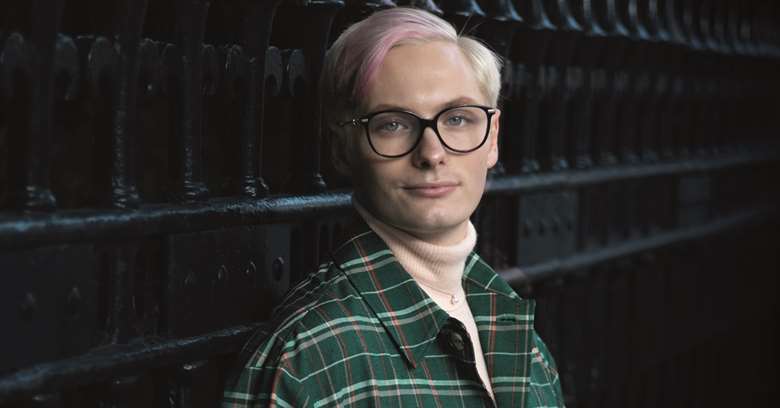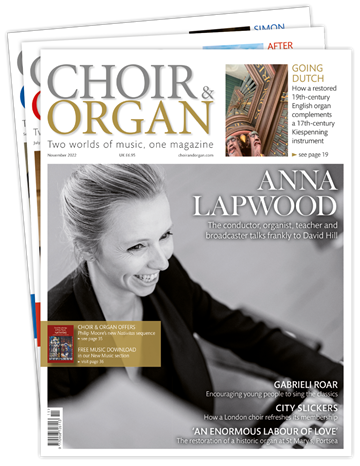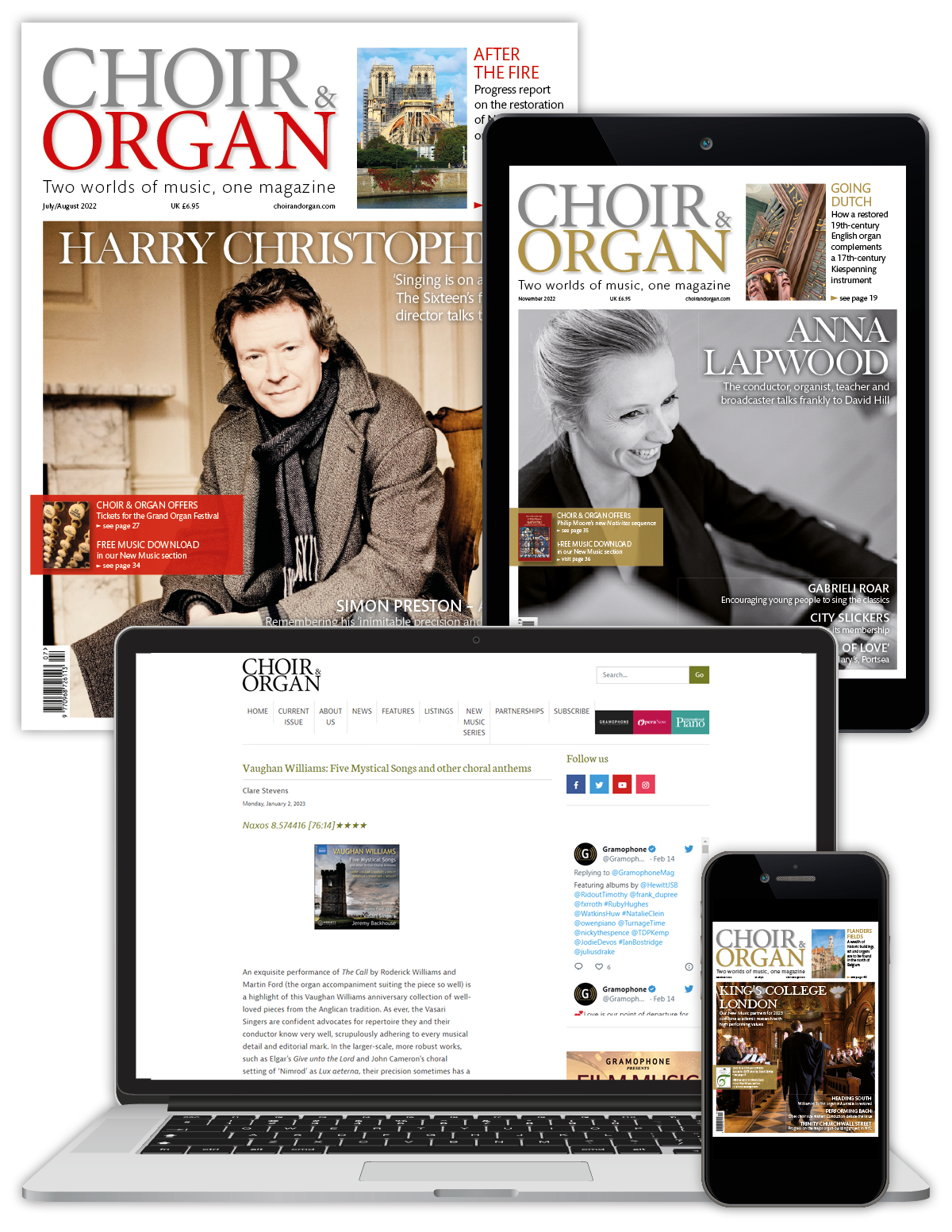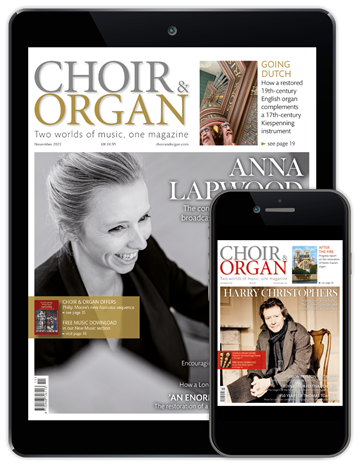Jasper Dommett - Intertwined Resonance
Friday, August 11, 2023
An ‘intriguing soundworld’ pervades Intertwined Resonance for solo organ. Composer Jasper Dommett talks to Matthew Power

Credit: DERRI JOSEPH LEWIS
At the Royal Welsh College of Music and Drama, studying baritone horn after years of brass band playing, Jasper Dommett soon found themself losing the passion for instrumental practice. ‘It sucked all my enjoyment out of playing. But I was composing, and the college allowed me to repeat a year and switch disciplines.’ Dommett had a strong sense that composition would now be their focus and knuckled down to work.
A Master’s degree in composition followed at the Royal Academy of Music (RAM), offering the freedom to explore. ‘For the first year I was in this artistic writing block where anything I composed was unsatisfactory and I had no idea what I wanted to do. I took that time to experiment, and I stumbled across things which I hadn’t considered before.’ An elective called ‘Diverse Voices’, led by Jessica Walker and Uchenna Ngwe, featured guest speakers – diverse voices talking about their entry into the music industry and their unique approaches to their careers. This was a pivotal moment for Dommett. ‘These people have very successful careers and are true to themselves: passionate about championing something unique to their own personal identity. That’s something I had been grappling with in earlier pieces, so I decided that it was important for me to investigate that side of my heritage as a queer person and use that as an impetus within my own work. It created a melting pot for me to express myself in a different way.’
Dommett credits two tutors in particular – Helen Grime and Rubens Askenar. ‘They opened my eyes to such different worlds. Helen comes from a harmonically rich background and a foundation in orchestral music; Rubens is focused on sound and resonance and made me think from a different perspective. What is harmony? What is line?’ Dommett finds this gives them a way out of a compositional block or rut in being able to find solutions.
There is a carefully controlled and often frantic-sounding energy to Dommett’s orchestral and ensemble pieces. Inspiration for The Light Messenger is drawn from words by the Sanskrit poet Kālidāsa and the astrophysical concept of Hawking Radiation (a sphere of light created around a black hole in space). ‘I was reading about these two very different things, but in my mind I saw them as one: this light which is like our last message to the universe. The work itself is very lyrical and based around the harmonic spectrum. It goes from tempered tuning to justly-tuned notes. Lyricism and melody [are things] which I come back to because of my brass band upbringing.’ Dommett also finds internal story lines lend a more dynamic structure to their music too.
A broad spectrum of musical influences colours Dommett’s many genres. In the ensemble piece Disco! Disco! Good! Good? Dommett references disco music and the ballroom scene, particularly the Baccara song ‘Yes Sir, I can boogie’, which is hilarious and yet communicates a deeper musical complexity. ‘That piece, for me, had so much meaning, as a queer person looking at what disco has done for the community, looking at the euphoric nature of being completely free in a safe space; but as soon as you leave those safe spaces, there is the fear of being seen by anyone who is homophobic or doesn’t have the same viewpoint. Writing music from that perspective has given me the confidence to continue.’
Rothko Room (for string quartet and electronics) is a musical response to an exhibition of eight monolithic abstract canvasses by Mark Rothko. For Dommett, their massive presence seemed to absorb the energy in the room and the work was an emotional response to that viewing. Stymied by the pandemic, the immersive project, which Dommett regards as more of an installation, would have combined the live quartet, electronics and audience in the actual exhibition space.
The genre of opera is often cited as the summit of artistic achievement. In 2021 came the premiere of Dommett’s first opera, Coram Boy, which for me has powerful overtones of Britten’s chamber writing. ‘It is easy for composers to view opera as a pinnacle… that when we have completed our opera, the world will change, we’ll receive all these commissions and work for the Royal Opera House. But of course that doesn’t happen! Obviously there are exceptional composers – George Benjamin, Thomas Adès, Kaija Saariaho for example.’ Dommett feels that allowing opera to be seen as an artistic mountain to climb can be damaging. ‘When I finished Coram Boy I had the worst kind of artistic doubt I’ve experienced; I felt that I had said everything I wanted to say in that opera.’
Time and experience have led to new plans, though. Opera will form the vehicle for doctoral study soon to begin at the Royal College of Music, which will explore LGBTQIA+ identity in tandem with microtonal composition. ‘Under the supervision of Mark Bowden I will examine the intersection between microtonality and queer segregation. I use microtones in my music more and more every day and I noticed that sometimes when you’re working with performers who aren’t used to microtonal music, they will say, “This sounds wrong, it’s out of place, it’s not natural.” I noticed those words are similar to the kind of homophobic slurs I had encountered, being told, “It’s not natural to be gay.” It’s interesting that these two things have a real poetic similarity.’ A key factor in achieving their goal will be to collaborate with the right librettist. ‘You need to have somebody you trust completely and who trusts you completely, because once it gets to the direction stage, it’s not about the music any more, it’s about all of these other moving parts.’
How did Dommett find writing for organ solo in their New Music piece Intertwined Resonance? It sets up an intriguing soundworld with an innovative use of mutation stops. ‘It is one of the hardest things I’ve written this year!’ Admitting that their score looks simple, Dommett explains the concept. ‘The instrument is interesting to write for because every organ is unique.’ Writing something that sounds new, while not imposing technical demands on the player, has been their goal. ‘I sat down at the organ at King’s College London and started listening to what it could and couldn’t do, understanding its uniqueness.’ After four attempts, including chorale-like forms, Dommett discarded their sketches and concentrated on the sonic possibilities of mutation stops. ‘There’s a phenomenon in music when you have two notes with a slight deviation in their overtones which creates a sense of beating. It’s similar to vibrato and in electronic music is termed tremolo. I found it interesting that you can get the organ to sing in that way. I was interested in using [the Tierce and Nazard] in a lyrical way.’ This original approach makes for a subtle soundscape which draws player and listener into a close aural encounter with the music.
What is the role of a composer in contemporary society and what are Dommett’s aims and aspirations as an artist? ‘I wish that more people had the opportunity to connect with classical music. It’s a huge shame that this generation don’t have the opportunities to experience great works of art from the classroom. As musicians, we have to continue making the art which speaks to us and hope that audiences will, wherever they come from, connect with it. I think as composers, by being true to ourselves and writing the music which truly speaks to us, we are playing our role in society.’
The score for Intertwined Resonance, commissioned by Choir & Organ in partnership with the Choir of King’s College London and supported by PRS for Music, was available to download and perform until 30 June 2024. Visit our New Music page for our current scores.






